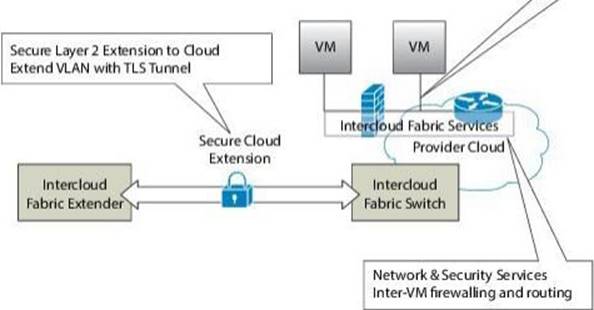Which option describes the function of the Intercloud Fabric Extender?
A . It provides the network overlay functionality between the used clouds or cloud models.
B . It establishes a secure site-to-site tunnel to the intercloud fabric agent in the private cloud.
C . It applies network policies and collects and reports VEM-related intercloud statistics.
D . It establishes a secure site-to-site tunnel to the intercloud fabric switch in the provider cloud.
Answer: D
Explanation:
From:

http://www.cisco.com/c/en/us/td/docs/cloud-systems-management/cisco-intercloud-fabric/cisco-intercloud-fabric-for-business/2-3-1/getting-started-guide/b_Cisco_Intercloud_Fabric_Getting_Started_Guide_Release_2_3_1/b_Cisco_Intercloud_Fabric_Getting_Started_Guide_Release_2_3_1_chapter_00.pdf
Cisco Intercloud Fabric Architectural Overview -Cisco http://www.cisco.com/c/en/us/td/docs/solutions/Hybrid_Cloud/Intercloud/Intercloud_Fabric/Intercloud_Fabric_2.html
Cisco Intercloud Fabric Secure Extension
All data in motion is cryptographically isolated and encrypted within the Cisco Intercloud Fabric Secure Extender. This data includes traffic exchanged between the private and public clouds (site to site) and the virtual machines running in the cloud (VM to VM). A Datagram Transport Layer Security (DTLS) tunnel is created between these endpoints to more securely transmit this data. DTLS is a User Datagram Protocol (UDP)-based highly secure transmission protocol. The Cisco Intercloud Fabric Extender always initiates the creation of a DTLS tunnel.
The encryption algorithm used is configurable, and different encryption strengths can be used depending on the level of security desired.
Latest 400-351 Dumps Valid Version with 192 Q&As
Latest And Valid Q&A | Instant Download | Once Fail, Full Refund